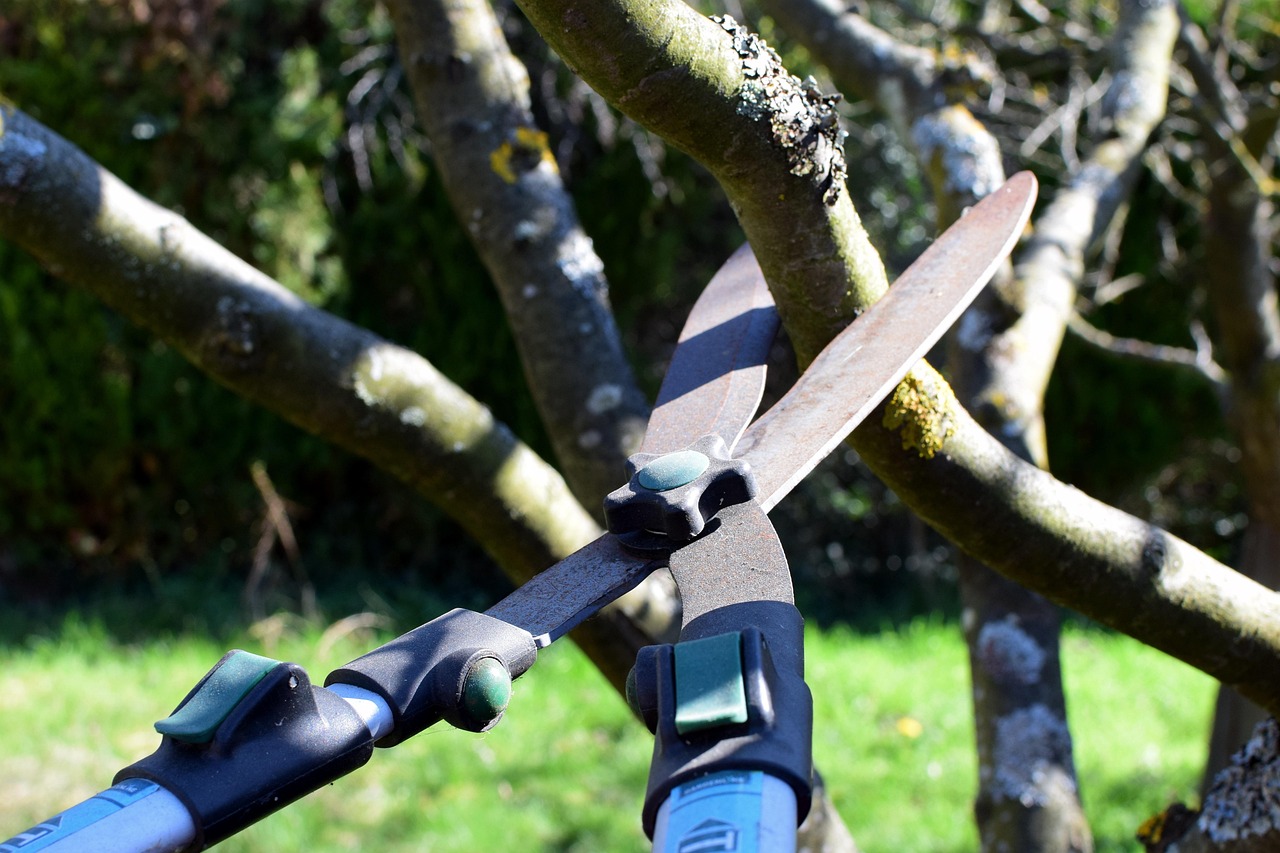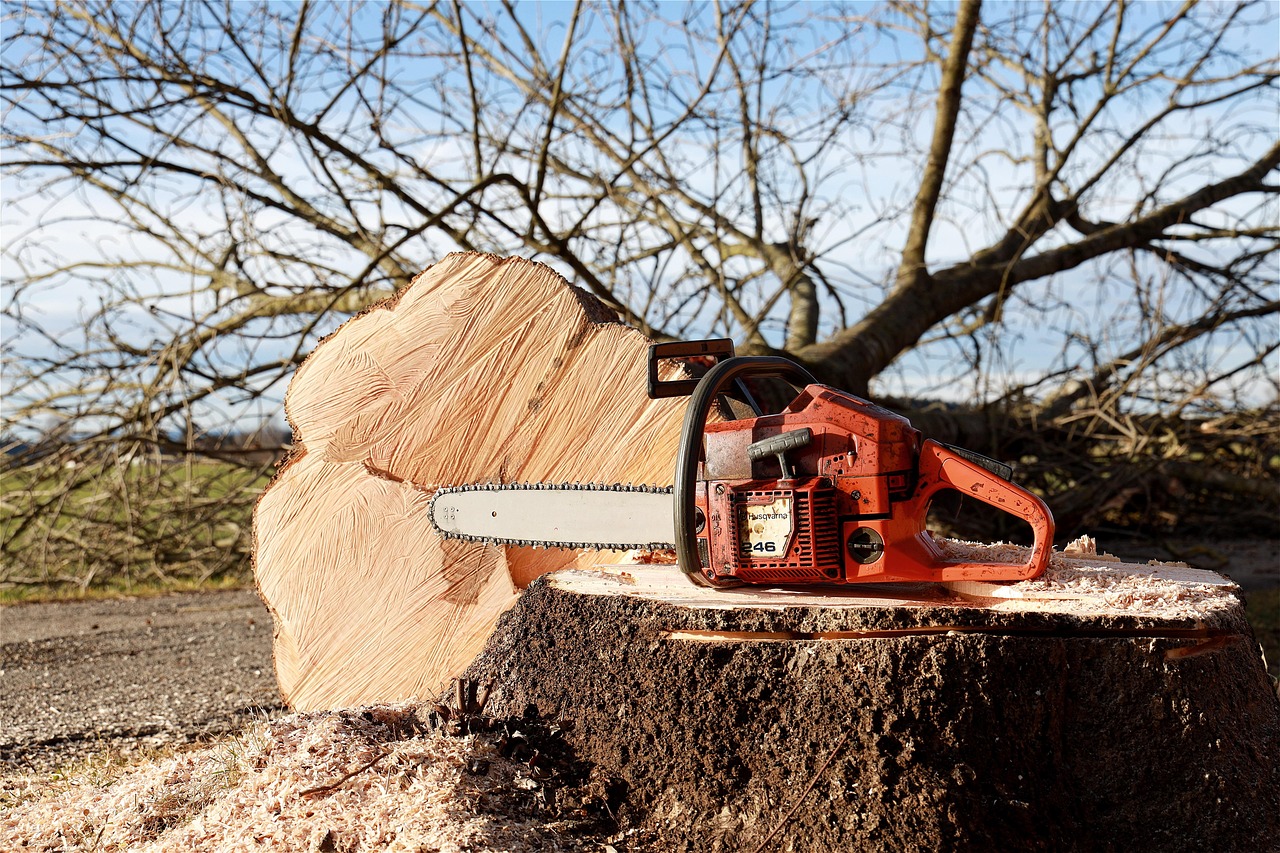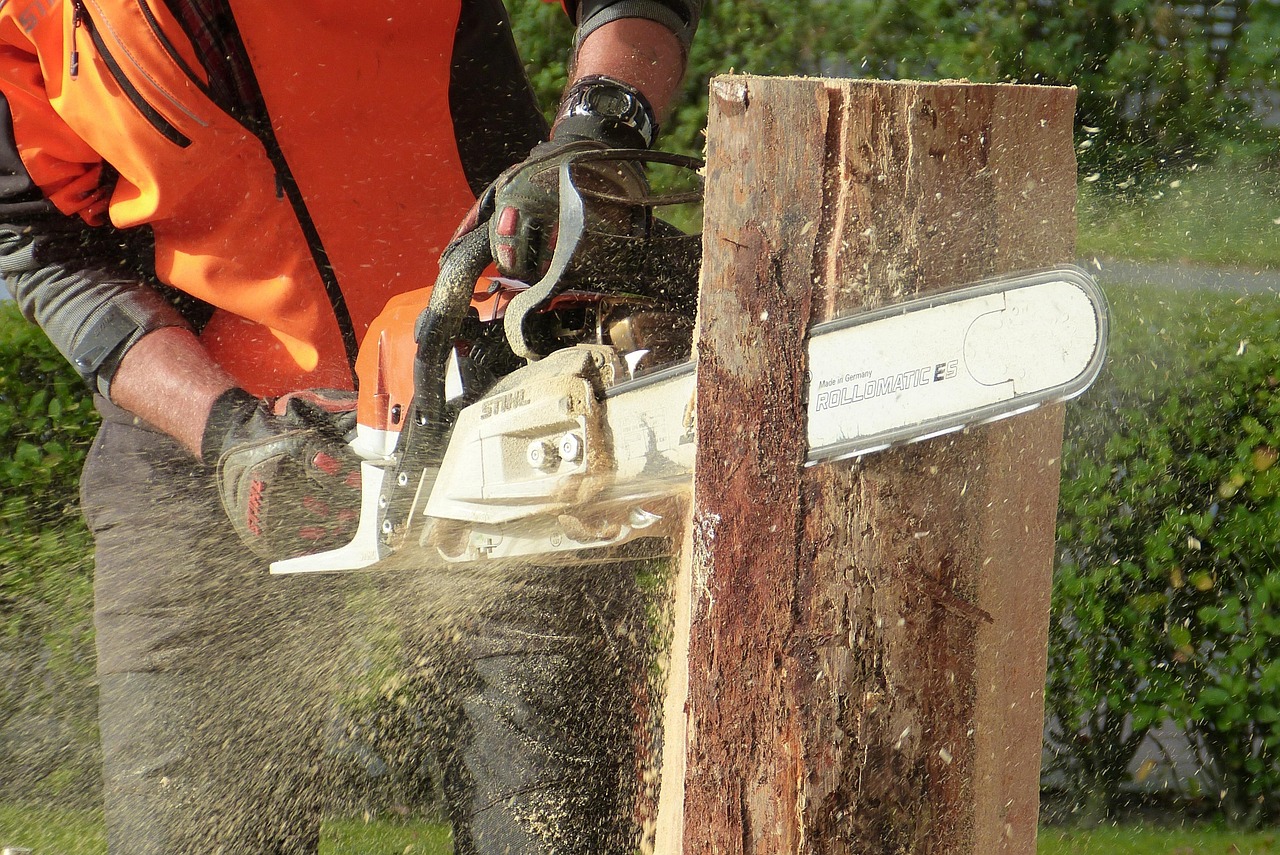Pruning gum trees is essential for their health and growth in Australian landscapes. Proper techniques promote strong structure, encourage new growth, and prevent disease. Timing and tools are crucial for effective pruning.
Gum trees, or eucalyptus trees, are iconic in Australia. They are known for their beautiful foliage and essential role in the ecosystem. These trees can grow quite large, making regular maintenance important. Pruning helps manage their size and shape, ensuring they fit well within your landscape while promoting health and vitality.

Understanding the specific species of gum tree is vital for effective pruning. Different species have unique growth habits and requirements. Some may respond well to severe pruning, while others may only need light trimming. Additionally, the time of year plays a significant role in the success of your pruning efforts.
Benefits of Pruning Gum Trees
Pruning offers numerous benefits that enhance the health and appearance of gum trees. Here are some key advantages:
- Improved Structure: Pruning helps develop a strong framework, reducing the risk of branch breakage during storms.
- Encouraged Growth: Regular pruning stimulates new growth, leading to denser foliage.
- Pest Control: Removing dead or diseased branches can help prevent infestations.
- Aesthetic Appeal: Pruning allows for shaping the tree to enhance the landscape’s visual appeal.
It is essential to consider the timing of your pruning efforts. Typically, the best time to prune gum trees is during their dormant season, which is usually late winter to early spring. This timing minimizes stress on the tree and encourages healthy growth once the warmer months arrive. However, it is crucial to avoid heavy pruning just before or during flowering periods, as this may affect blooming.

Essential Tools for Pruning
Having the right tools makes the pruning process more efficient and effective. Here are some essential tools you should have:
| Tool | Description |
|---|---|
| Pruning Shears | Ideal for small branches and fine cuts. |
| Loppers | Used for thicker branches that are difficult to cut with shears. |
| Saw | A handsaw or pole saw is necessary for large branches. |
| Gloves | Protect your hands from sharp tools and branches. |
| Ladder | Essential for reaching higher branches safely. |
Before you start pruning, ensure your tools are sharp and clean. This prevents damage to the tree and reduces the risk of introducing diseases. Clean cuts heal faster and provide a better recovery environment for the tree.
Pruning Techniques to Consider
There are various techniques to use when pruning gum trees. Each technique caters to different needs depending on the tree’s condition and your goals:

Crown Thinning
This technique involves selectively removing branches within the tree’s crown. It enhances light penetration and air circulation, promoting overall health. Be cautious not to remove too many branches at once, as this can stress the tree.
Crown Reduction
Crown reduction reduces the height or spread of a tree while maintaining its natural shape. This method is useful when a tree becomes too large for its space. Ensure that cuts are made just above a lateral branch to encourage new growth.
Cleansing Cuts
Cleansing cuts involve removing dead or diseased branches. This practice helps improve the tree’s health by preventing disease spread and allowing for better air flow through the canopy.

Shaping
Shaping involves trimming the outer edges of the tree to maintain a desired aesthetic form. This technique is often used in landscaped settings where appearance is key.
Each of these techniques requires careful consideration. It is important to assess the tree’s health and growth pattern before deciding on a method. Understanding how each technique affects tree health will lead to better outcomes.
Pruning gum trees is not just about aesthetics. It plays a crucial role in their vitality and longevity in Australian landscapes. By following these tips and techniques, you will ensure your gum trees thrive for years to come.
Identifying the Right Time to Prune
Determining the right time to prune gum trees is essential for effective maintenance. Timing can significantly influence the tree’s health and its ability to recover from pruning. Here are several key factors to consider when scheduling your pruning activities:
- Seasonal Timing: The best time to prune most gum trees is during their dormant season, typically in late winter or early spring. This timing minimizes stress on the tree and allows it to heal more effectively.
- Weather Conditions: Choose a dry day for pruning. Wet conditions can increase the risk of disease spread through open cuts.
- Growth Patterns: Observe the tree’s growth patterns. Prune after vigorous growth periods to encourage new growth without overwhelming the tree.
- Flowering Periods: Avoid heavy pruning just before or during flowering seasons. This can hinder blooming and affect the overall appearance of the tree.
Understanding Common Pruning Mistakes
Even experienced gardeners can make mistakes when pruning gum trees. Being aware of common pitfalls can help you avoid damaging your trees. Here are some mistakes to watch out for:
- Over-Pruning: Removing too much foliage can stress the tree and lead to poor health. Aim for a balanced approach.
- Poor Cutting Techniques: Incorrect cuts can damage the tree. Always cut at an angle to promote healing and avoid tearing bark.
- Ignoring Tree Health: Failing to assess the overall health of the tree before pruning can lead to further issues. Always check for signs of disease or stress.
- Using Dull Tools: Dull tools can make jagged cuts that don’t heal well. Always ensure your tools are sharp and in good condition.
Pruning for Specific Goals
Different gardening goals require different pruning strategies. Understanding your objectives will help guide your pruning decisions. Below are some common goals and their corresponding techniques:
Enhancing Safety
If a gum tree poses a safety risk due to overhanging branches or proximity to structures, consider these techniques:
- Removing Hazardous Branches: Focus on branches that threaten property or people.
- Crown Lifting: Remove lower branches to create more clearance underneath the tree.
Encouraging Wildlife
If you want to attract birds and other wildlife, consider these tips:
- Selective Thinning: Create openings in the canopy for light, which supports undergrowth.
- Leaving Natural Cavities: Preserve some dead branches as they provide habitat for various species.
Improving Aesthetics
Aesthetic pruning focuses on shape and appearance. Use these strategies:
- Sculpting: Regularly trim the outer edges to maintain a specific shape.
- Balancing Growth: Ensure even growth by selectively pruning branches that disrupt the tree’s symmetry.
Post-Pruning Care
A proper post-pruning care routine is crucial to support the health of gum trees after they have been pruned. Here are some steps to follow:
- Watering: Ensure your tree receives adequate water, especially during dry spells. This supports recovery.
- Mulching: Apply mulch around the base of the tree. This helps retain moisture and suppress weeds.
- Pest Monitoring: Keep an eye out for signs of pests or diseases that may take advantage of the fresh cuts.
- Nutrient Supply: Consider applying a balanced fertilizer if necessary, but do so cautiously to avoid over-fertilization.
Utilizing Professional Help
If you feel unsure about pruning your gum trees, seeking professional help is a wise choice. Here are some benefits of hiring an expert:
- Expertise: Professionals have extensive knowledge about specific species and their needs.
- Safety: Hiring experts minimizes risks associated with working at heights or with large branches.
- Proper Techniques: Professionals use advanced techniques that ensure healthy growth and recovery for your trees.
When choosing a professional, look for certified arborists who have experience with gum trees specifically. This ensures that your trees receive the best care possible.
Caring for gum trees through proper pruning is an ongoing task that requires knowledge and attention. By understanding when and how to prune, avoiding common mistakes, setting clear goals, and providing post-pruning care, you can maintain healthy and beautiful gum trees in your Australian landscape.
Common Species of Gum Trees in Australia
Australia is home to a vast variety of gum trees, each with unique characteristics and growth habits. Understanding the specific species you are working with is crucial for effective pruning and care. Here are some of the most common species of gum trees found across the continent:
| Species Name | Characteristics | Pruning Needs |
|---|---|---|
| Eucalyptus globulus (Blue Gum) | Tall tree with smooth bark and aromatic leaves. Grows rapidly. | Regular thinning and crown reduction to manage height. |
| Eucalyptus camaldulensis (River Red Gum) | Known for its resilience to drought and vibrant red bark. | Focus on removing dead wood and shaping for appearance. |
| Eucalyptus citriodora (Lemon-Scented Gum) | Features a distinctive lemon scent and long, narrow leaves. | Thin crown to allow sunlight penetration and promote health. |
| Eucalyptus polyanthemos (Silver Dollar Gum) | Characterized by its round leaves and attractive silver sheen. | Light pruning to maintain shape and remove any dead branches. |
Understanding Tree Growth Patterns
Each species of gum tree has distinct growth patterns that should influence your pruning strategy. By understanding how these trees grow, you can make more informed decisions about when and how to prune effectively.
Growth Habit
Gum trees can generally be categorized into two main growth habits: upright and spreading. This classification affects how you approach pruning:
- Upright Growth: Trees with a vertical growth habit may require more crown reduction and thinning to maintain a manageable height.
- Spreading Growth: Trees that grow wide may need selective thinning to allow light to reach the inner branches and maintain a healthy structure.
Response to Pruning
Different species respond differently to pruning. Some may thrive after heavy cuts, while others may suffer stress:
- Resilient Species: Some gum trees can handle significant pruning without adverse effects, leading to vigorous regrowth.
- Sensitive Species: Others may require a gentler approach, with lighter cuts made over several seasons.
Tools for Advanced Pruning Techniques
For those looking to delve deeper into advanced pruning techniques, having the right tools is even more critical. The following tools can help you achieve precise cuts and ensure the health of your gum trees:
- Bypass Pruners: Ideal for small branches, providing clean cuts without damaging the plant.
- Hand Saws: Useful for larger branches that cannot be cut with pruners.
- Pole Pruners: Extendable tools that allow you to reach high branches safely.
- Pest Control Sprays: After pruning, it may be helpful to apply treatments that protect the tree from pests.
Seasonal Maintenance Beyond Pruning
Maintaining gum trees involves more than just pruning. Seasonal care plays a significant role in their overall health. Here are some essential maintenance tasks:
Watering Needs
During dry periods, ensure your gum trees receive adequate water. Young trees especially need consistent moisture to establish their roots:
- Drip Irrigation: A drip system can provide slow, deep watering directly to the roots.
- Mulching: Apply mulch around the base of the tree to retain moisture and suppress weeds.
Nutrient Management
A balanced nutrient supply is crucial for healthy growth. Here are some tips for managing nutrients:
- Soil Testing: Conduct soil tests to determine nutrient levels and pH balance.
- Organic Fertilizers: Use organic options like compost or well-rotted manure to enrich the soil.
Pest Monitoring
Regularly checking for signs of pests is an important aspect of tree care. Common pests include:
- Eucalyptus Weevil: Look for holes in leaves or branches and treat promptly.
- Mites: Check for webbing on leaves; use appropriate treatments if detected.
Caring for Young Gum Trees
Caring for young gum trees requires special attention to promote strong growth. Here are some tips specifically for young trees:
- Staking: Support young trees with stakes if they are in windy areas, ensuring stability as they grow.
- Crown Maintenance: Focus on developing a strong central leader by selectively pruning competing branches.
- Avoiding Damage: Protect young trees from lawn equipment and other potential hazards.
The health and beauty of gum trees in Australian landscapes rely on proper understanding and care. By recognizing species differences, growth patterns, seasonal needs, and advanced techniques, you will create a thriving environment for these iconic trees.
Additional Resources for Gum Tree Care
To further enhance your knowledge about gum tree pruning and care, consider exploring the following resources:
- Local Gardening Clubs: Join a gardening club in your area. These clubs often host workshops and provide valuable information about specific tree species.
- Online Forums: Participate in online gardening forums. Websites like Gardenia and Gardening Australia offer community support and expert advice.
- Extension Services: Many universities provide agricultural extension services that offer resources, workshops, and expert consultation for tree care.
- Books and Guides: Invest in books focused on Australian flora, particularly those that cover Eucalyptus species. They provide in-depth information about growth habits, care, and maintenance.
Understanding the Ecosystem Benefits of Gum Trees
Gum trees play a critical role in the Australian ecosystem. Understanding their ecological benefits can enhance your appreciation of these trees and inform your care practices:
- Habitat: Gum trees provide habitat and food for a variety of wildlife, including birds, insects, and mammals. Maintaining healthy trees supports biodiversity.
- Carbon Sequestration: As significant carbon sinks, gum trees help mitigate climate change by absorbing carbon dioxide from the atmosphere.
- Soil Improvement: The leaf litter from gum trees enriches the soil with nutrients, promoting healthier ecosystems beneath their canopy.
Common Questions About Gum Tree Pruning
If you are new to pruning gum trees or have specific concerns, you may find the following frequently asked questions helpful:
What is the best time of year to prune gum trees?
The best time to prune gum trees is during the dormant season, typically late winter to early spring. This timing minimizes stress on the tree and encourages healthy regrowth.
How much can I prune without harming the tree?
A general rule is to avoid removing more than 25% of a tree’s canopy in one season. This helps prevent stress and promotes healthy regrowth.
Should I seal cuts after pruning?
In most cases, it is best to avoid sealing cuts with paint or other products. Modern practices recommend leaving cuts open to heal naturally, as this allows for better recovery and reduces the risk of trapping moisture and pathogens.
Final Thoughts
Caring for gum trees through proper pruning and maintenance is essential for their health and longevity. By understanding the specific needs of different species, recognizing their growth patterns, and employing the right techniques, you can ensure that these iconic Australian trees thrive in your landscape.
Remember the importance of timing and technique in your pruning efforts. Stay informed through community resources and expert advice to improve your skills continuously. The beauty and ecological benefits of gum trees make them a worthwhile investment in any Australian landscape. With your commitment to their care, these trees will not only enhance your property but also contribute positively to the environment.
As you embark on your journey of gum tree care, let your passion for these remarkable trees guide you to make informed decisions. With diligence and understanding, you can create a healthy and vibrant landscape that showcases the beauty of Australia’s natural heritage.
